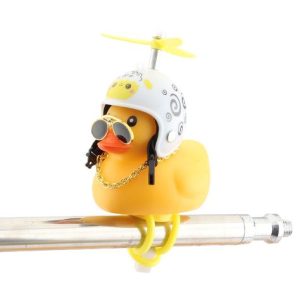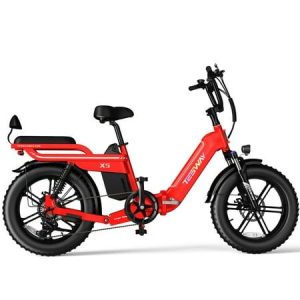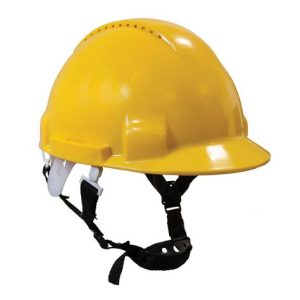Apr 30, 2024
Exploring the World of Light Helmets
Helmets are an essential piece of safety gear for anyone riding a motorcycle, bicycle, or other motorized equipment. But traditional helmets can sometimes feel bulky and heavy. This is where light helmets come in! These innovative helmets aim to provide superior protection in a lighter weight design.
In this comprehensive guide, we’ll delve into the world of light helmets, exploring their features, benefits, and considerations. Whether you’re a seasoned rider or just starting out, this article will help you decide if a light helmet is the right choice for you.
Understanding Light Helmet Technology
Light helmets achieve their weight reduction through a variety of innovative technologies. Here are some of the most common:
Advanced Shell Materials:
Light helmets often use advanced materials like composite shells or high-strength plastics. These materials are lighter than traditional metal shells while still meeting safety standards.
Streamlined Design:
Light helmets may have a sleeker, more aerodynamic design compared to traditional helmets. This can help reduce weight and wind resistance.
Targeted Padding:
Light helmets may use strategically placed padding to provide optimal protection in key areas while minimizing weight in other areas.
It’s important to note that even though light helmets are lighter, they should still meet all relevant safety standards set by organizations like the U.S. Department of Transportation (DOT) or the Snell Memorial Foundation.

Benefits of Light Helmets
Riders who choose light helmets often cite several benefits:
- Increased Comfort: The reduced weight of a light helmet can lead to increased comfort, especially on long rides. This can help reduce neck and back strain.
- Improved Mobility: A lighter helmet can feel less restrictive and allow for greater head movement, which can be beneficial for certain riding styles or maneuvers.
- Enhanced Ventilation: Some light helmet designs incorporate improved ventilation systems to help keep riders cool and comfortable.
These benefits can make riding a more enjoyable experience, potentially leading to more frequent helmet use.
Things to Consider When Choosing a Light Helmet
While light helmets offer many advantages, there are some factors to consider before you buy one:
- Safety: Safety should always be your top priority. Make sure the light helmet you choose meets the relevant safety standards for your region.
- Protection Level: Consider the level of protection you need. Light helmets may not offer the same level of protection as some traditional helmets, especially for high-impact crashes.
- Riding Style: Think about your riding style and the conditions you’ll be riding in. Light helmets may be suitable for some riding styles but not for others.
- Fit: As with any helmet, proper fit is crucial for optimal safety and comfort. Make sure the light helmet you choose fits your head snugly and securely.
It’s wise to consult with a motorcycle gear expert or attend a helmet fitting session before purchasing a light helmet.

The Future of Light Helmets
Light helmet technology is constantly evolving. Here are some exciting trends to watch:
- New Materials: Manufacturers are exploring even lighter and stronger materials for helmet shells.
- Advanced Padding Systems: New padding technologies may offer improved impact absorption while keeping weight low.
- Integrated Technologies: Some light helmets are incorporating features like Bluetooth communication or heads-up displays.
As these advancements continue, light helmets have the potential to become the standard for motorcycle safety equipment.
Light helmets offer a compelling alternative to traditional helmets, providing a lighter weight design without sacrificing safety. However, it’s important to carefully consider the factors mentioned above before making a decision. With the ongoing development of new technologies, the future of light helmets looks bright!

Exploring Different Helmet Styles
While light helmets offer a unique option for riders, there are other motorcycle helmet styles to consider, each with its own advantages:
-
Full-face helmets: These helmets offer the most comprehensive protection, covering the entire head and face. They are a good choice for riders who do a lot of highway riding or who want the most protection possible.
-
Modular helmets: These helmets offer the versatility of a full-face helmet with the convenience of a flip-up chin bar. This can be helpful for riders who want to be able to talk or eat without taking their helmet off entirely.
-
Open-face helmets (¾ helmets): These helmets provide protection for the top and back of the head, but leave the face exposed. They are a good choice for riders who value comfort and ventilation in warmer climates, but they don’t offer the same level of protection as full-face helmets.
-
Dual-sport helmets: These helmets are designed for both on-road and off-road riding. They typically have a visor that can be flipped up and a peak to help block the sun.
The best helmet style for you will depend on your individual needs and preferences. Consider the factors mentioned earlier, such as your riding style and the climate where you live.

Caring for Your Helmet
No matter what type of helmet you choose, it’s important to take care of it properly. Here are some tips for keeping your helmet clean and in good condition:
- Store your helmet in a cool, dry place: Avoid storing your helmet in direct sunlight or extreme temperatures.
- Clean the helmet regularly: The frequency of cleaning will depend on how often you use your helmet and the conditions you ride in. But generally, you should clean the helmet at least once a month. You can use a mild soap and water solution to clean the outer shell and liner.
- Inspect your helmet for damage: Before each ride, take a few minutes to inspect your helmet for any cracks, scratches, or loose parts. If you find any damage, don’t ride with the helmet. Replace it with a new one.
By following these tips, you can help ensure that your helmet will provide you with the protection you need in the event of a crash.

Conclusion
Light helmets offer a new generation of safety technology for motorcycle riders. They provide a balance between weight, comfort, and protection. However, it’s important to prioritize safety and choose a helmet that meets the relevant safety standards and offers the level of protection you need for your riding style. With a variety of helmet styles and technologies available, there’s sure to be a perfect option for every rider.























